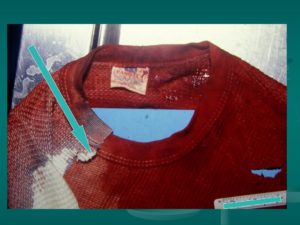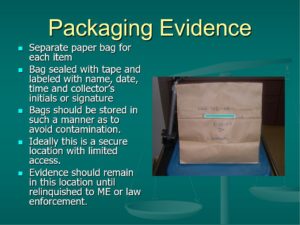Dr Andrew presents “Dead Men Do Tell Tales: Forensic Medicine in Primary Care”
What are the best practices with respect to evidence handling and chain of custody Issues?
In this lecture, Dr Andrew presents to a group of medical professionals, and describes the best practices for documenting, preserving and storing of evidence. He presents numerous examples, and illustrates how properly preserved evidence can have a significant impact on legal proceedings.
Dr. Andrew explains that all medical institutions should codify procedures to ensure that chain of custody is maintained and that the evidence is not contaminated when it is placed in storage and while it is maintained in storage.
The recommendations offered by Dr Andrew include the following: that evidence be handled only using gloves; that clothing defects be preserved–particularly when clothing has been removed by cutting; and, that evidence be stored in paper bags rather than plastic since plastic can cause condensation.


- Clothing
- Cut or torn?
- Puncture marks
- Dirt, residue or other foreign material
- Foreign material on or in the patient’s hair or body, e.g., glass, metal or paint chips
- Biological specimens
- The injuries themselves, with complete descriptions, including;
- Basic size and shape of injury
- Precise and accurate language and measurements
- Orient the described injury to a clear anatomic landmark
- Locate the described injury in at least two planes.
- The guilty found guilty, and even more importantly . . .
- The innocent found not guilty
Since the lecture contains some disturbing images, it is not provided in full. If you or your medical staff would be interested in obtaining a copy of the full video or would be interested in having Dr Andrew speak on this subject, please contact him by clicking the link below.
Contact Us

